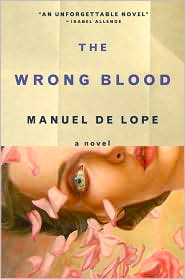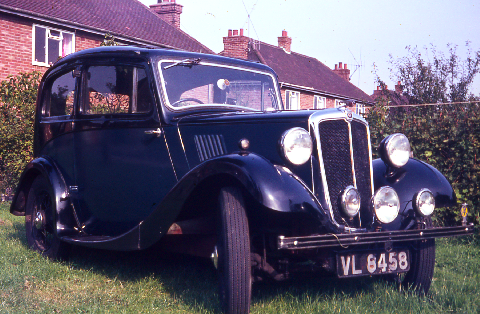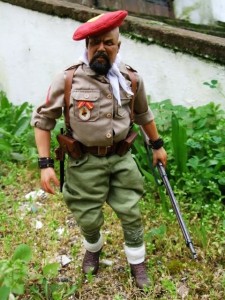“He had left his golden wedding ring, his wristwatch, his field glasses, and the folded sheet of untrimmed paper, the unenveloped letter that began with the words My Dear Love, with a request that they might be delivered to the person indicated. The whole lot, with the exception of the field glasses, arrived at its destination. The war exhibited such caprices, saving certain small objects with the tactile delicacy of a blind giant and devouring property and people like the same giant in a fury.”
The Sp anish Civil War (1936 – 1939), with its terrible effects on residents of the Basque country, near the French border, was a complex and brutal war in which soldiers, sometimes neighbors, often found themselves fighting for different sides. Author Manuel de Lope, who grew up in Burgos, not far from the Basque Country, obviously knows the landscape and the culture well, describing the overwhelming beauty of the land and mountains with an obvious love of nature, and the characters in his story with understanding and affection. Not a traditional war story, the author focuses instead on three characters who, though affected by the war in terrible ways, are peripheral to that bloody action—Maria Antonia Etxarri, the daughter of a former innkeeper from a nearby town; Dr. Felix Castro, a young, crippled doctor; and Isabel Cruces Herraiz, the bride (and soon widow) of a young officer, all living in the village of Hondarribia. When Miguel Goitia, a young law student studying for his exams, arrives at Las Cruces sixty-five years after the Civil War, he is greeted politely by Maria Antonia and allowed to stay in the inn which was once the home of his grandmother, Isabel Herraiz. Though she died a number of years ago, her presence in the lives of the other elderly characters is still very real, and as flashbacks occur, she becomes a significant force even in the present.
anish Civil War (1936 – 1939), with its terrible effects on residents of the Basque country, near the French border, was a complex and brutal war in which soldiers, sometimes neighbors, often found themselves fighting for different sides. Author Manuel de Lope, who grew up in Burgos, not far from the Basque Country, obviously knows the landscape and the culture well, describing the overwhelming beauty of the land and mountains with an obvious love of nature, and the characters in his story with understanding and affection. Not a traditional war story, the author focuses instead on three characters who, though affected by the war in terrible ways, are peripheral to that bloody action—Maria Antonia Etxarri, the daughter of a former innkeeper from a nearby town; Dr. Felix Castro, a young, crippled doctor; and Isabel Cruces Herraiz, the bride (and soon widow) of a young officer, all living in the village of Hondarribia. When Miguel Goitia, a young law student studying for his exams, arrives at Las Cruces sixty-five years after the Civil War, he is greeted politely by Maria Antonia and allowed to stay in the inn which was once the home of his grandmother, Isabel Herraiz. Though she died a number of years ago, her presence in the lives of the other elderly characters is still very real, and as flashbacks occur, she becomes a significant force even in the present.

Goitia, though reclusive and not involved in any activities, other than his studies, becomes the catalyst for the real story here, and as the action moves from the present back and forth to the time of the war, the other characters, now elderly, are inexorably drawn to him. Maria Antonia and Dr. Castro are privy to secrets involving Goitia, though he does not suspect this, and the big question is whether or not they feel he will benefit if these secrets are revealed.
Consummately romantic in a literary way, this novel has great appeal even for those who usually do not like such novels, and anyone who enjoyed Shadow of the Wind by Carlos Ruiz Zafon will find much of the style similar, despite the very different subject matter. The novel is dense with sensual imagery which recreates the magic of the landscapes and buildings, and as the action develops, this imagery creates often haunting atmospheres. His characters are well individualized within the limitations of the genre, and they often inspire sympathy and empathy. So smoothly does de Lope incorporate his descriptions, even as he is switching back and forth in time, that the novel at times feels more like music than prose.
 Divided into four parts, the author focuses in Part I on Maria Antonia Etxarri, sixteen and temporarily alone at her father’s inn as war breaks out. When twenty soldiers arrive for the night, the inevitable happens, and Maria Antonia is raped. She soon leaves the inn and enters service for an old, wheelchair-bound man who collapsed at her father’s inn while on his way to witness the wedding of the elegant Isabel. Later Maria Antonia becomes Isabel’s servant. When Goitia arrives in the present, he observes the wedding picture of his grandmother, Isabel, in a cabinet, but shows little interest in the family connection. Part II describes the wedding and Biarritz honeymoon of Isabel and her captain, Julen Herraiz, who leaves shortly after for the war, leaving Isabel bereft, always convinced that he will return, though evidence, including his wedding ring, wristwatch, and the love letter delivered to her belie that. Part III is Dr. Castro’s story as he tries to protect life, and Part IV explains the mystery.
Divided into four parts, the author focuses in Part I on Maria Antonia Etxarri, sixteen and temporarily alone at her father’s inn as war breaks out. When twenty soldiers arrive for the night, the inevitable happens, and Maria Antonia is raped. She soon leaves the inn and enters service for an old, wheelchair-bound man who collapsed at her father’s inn while on his way to witness the wedding of the elegant Isabel. Later Maria Antonia becomes Isabel’s servant. When Goitia arrives in the present, he observes the wedding picture of his grandmother, Isabel, in a cabinet, but shows little interest in the family connection. Part II describes the wedding and Biarritz honeymoon of Isabel and her captain, Julen Herraiz, who leaves shortly after for the war, leaving Isabel bereft, always convinced that he will return, though evidence, including his wedding ring, wristwatch, and the love letter delivered to her belie that. Part III is Dr. Castro’s story as he tries to protect life, and Part IV explains the mystery.

Typically romantic story lines abound: the elegant and perfect wedding, the death of a hero, unexpected inheritances, secret identities, the lowly servant being lifted up, the good doctor making heartrending decisions which haunt his life, the comfort of memories, and the sensitive soldier who hates violence, among the many. Unfortunately, though the novel is fully developed and vibrant with life, both from nature and from its people, the secret at the heart of the plot is easy to figure out early. The author also provides a good deal of obvious foreshadowing, and the characters often hint at their secret. The author’s use of unfortunate, revealing titles for the four parts of the novel include spoilers, and there is little suspense other than to know whether not the reader’s guesses are correct. Fortunately, the vibrant imagery and many superb descriptions keep the reader attentive and involved, despite the obvious plot twists. The novel captures a place, time, and culture, and the description and imagery make it all come alive.
Photos, in order: The author’s photo (by Jorge Aparicio) is from http://www.nytimes.com. A good interview with the author (in Spanish) is here: www.elpais.com
Isabel and Julen depart from their wedding in this Morris Oxford car from 1936. The doctor and Goitia are fascinated by this car, and the doctor wants to buy it. http://www.motorbase.com
The red beret of the requetes, mentioned in the novel, is shown in this Spanish Civil War action figure: http://www.onesixthwarriors.com
